S & J Nursery’s Guide to
Growing Orinoco Banana Plants / Old Florida Plantain Plants
in Northeast Florida Gardens
Orinoco Banana Plants For Northeast Florida Gardens Origin:
Bananas are not actually trees but an herbaceous plant that grows many pseudostems with a large underground corm, the pseudostems collectively are known as a banana mat. Each banana mat can consist of many many banana stems growing together. Each pseudostem, ( what we most commonly referred to as a ‘banana tree’ or the “trunk” of the plant is actually just a collection of the bases of the large banana leaf stalks that we would consider the banana leaves all wrapped together in a tight trunk looking thing we call a banana plant. Each banana stem within that banana mat will produce one stalk of bananas in what we call a bunch of bananas. Each banana bunch consists of several hands of bananas growing together spaced out along the bananas rachis. Different varieties of bananas will produce different amounts of bananas per hand as well as different amounts of hands per banana bunch.
The Orinoco Banana plant will produce 3-5 hands per pseudostem with smaller thick angular shaped bananas.
They are native to Southeast Asia and have been cultivated and carried throughout the tropics and subtropical portions of the world for thousands of years. Orinoco is named after the Orinoco river basin in Venezuela.
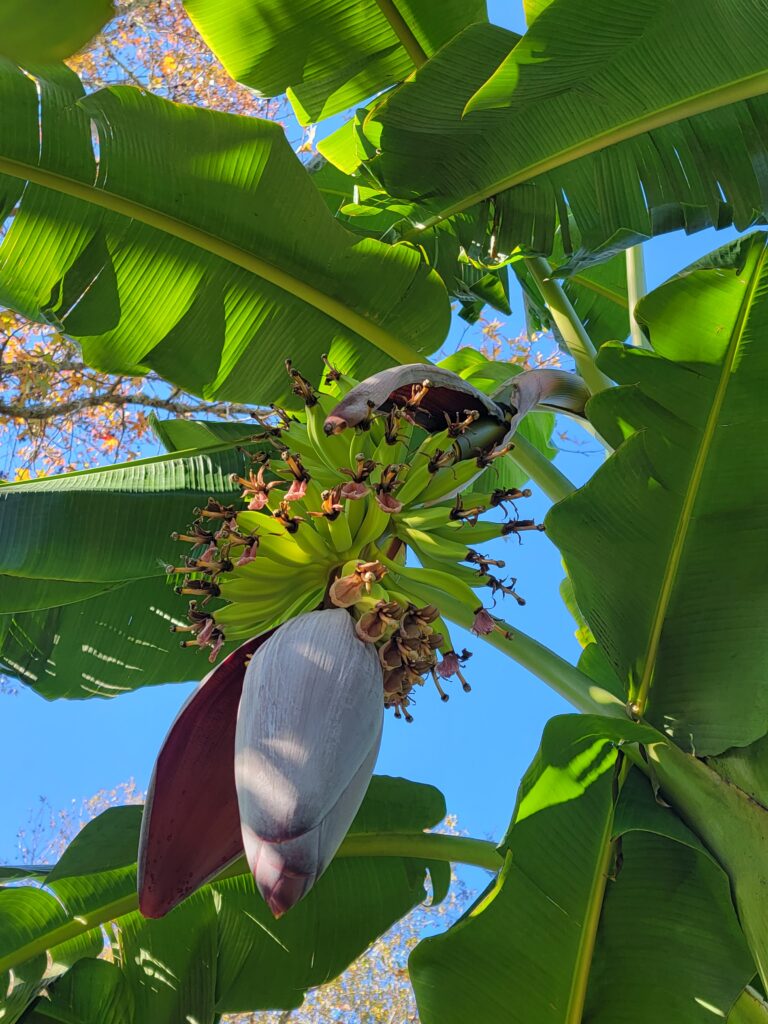
Orinoco Banana Plants are an ABB or ‘Bluggoe Banana’ selection. They have one set of genes from the Acuminata banana group and two sets of genes from the Bulbisiana banana group. (ABB) They neither fall neatly into the plantain nor the banana classification system we like to utilize for fruit names here in the US. They can be eaten raw or cooked and are my personal favorite banana of them all. I have grown this prolific variety for over 20 years. I love the thicker texture and the slight hint of acidity to the Orinoco banana with a gentle banana flavor that makes them unique and perfect for eating fresh or making ice cream, smoothies etc. and the texture holds up wonderfully for banana fries or sliced and fried for dessert plantain style cooking. Id like to say I utilize them for all of those things but I honestly most of the time never get around to it, at my house they disappear to fast for my liking no matter how many I seem to have in production.
Sun Exposure for the Orinoco Banana/ Old Florida Plantain:
In Northeast Florida, bananas should be planted into a full sun or partial shade location preferably on the south side of the home and away from frost prone areas of the landscape. That being said, Orinoco banana plants are known for their tolerance of all forms of abuse and shade is included in that tolerance. They will still produce well in shadier areas of the landscape but will be slower to grow and slower to produce fruit in areas not receiving a good 6 hours of sunlight per day.
Foliage of the Orinoco Banana/ Old Florida Plantain:
Orinoco banana plants are relatively cold tolerant and a good choice for the North East Florida landscape. The established banana plant can withstand temperatures down to 15 degrees for short periods of time and still regrow the next season from the underground corm making them a viable plant option for areas as low as zone 7. As with all Banana plants , temperatures below 32 for long periods of time can damage the stem and make the banana stem slow to grow and slower to produce fruit.
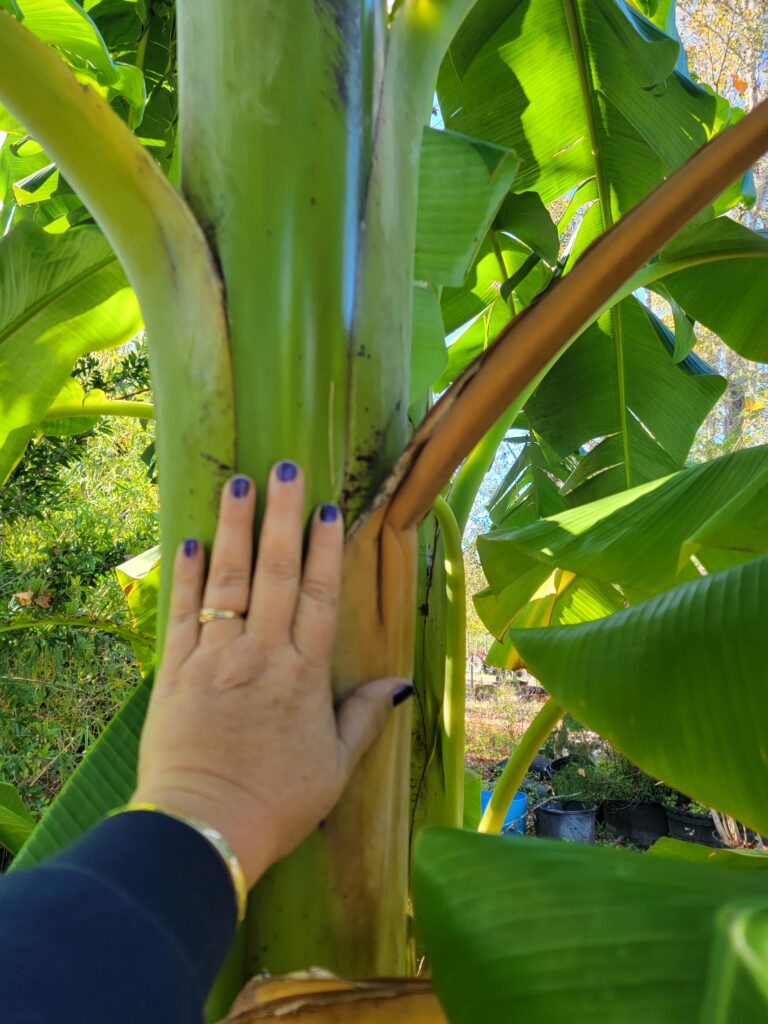
Foliage can be damaged by high winds in our subtropical climate zone, there is no need to remove them if they get ripped up and damaged and are still green, they are still photosynthesizing and feeding the banana plant. Once the leaf has browned out you can trim them off to maintain the neater appearance of the stems, but again its mostly for aesthetics just to keep them pretty.
Orinoco bananas are not just cold tolerant they are also the super heroes of my banana collection when it comes to the stems surviving the tropical storm and hurricane force winds we can get in NE Florida. The video I linked at the top of the page was me assessing a trial run where someone in my banana lovers of Florida group suggested leaving the dried up foliage and not thinning trunks to keep the fruiting stems from snapping during storms, this banana plant that year went through quite a few tropical storm force winds without the banana stems braced up for support and this video was me checking on it after the storm had passed! I really found no visible difference in the Orinoco plants with old leaf stalks still attached and with old leaf stalks trimmed. They just held their bananas well. That little experiment of coarse would probably get different results with stronger storm winds or even with more mature bananas, as they were these were still decently young and so therefore…lighter than they could have been had the storm been later in the season. The best practice is always staking your fruiting stems on banana plants in Florida…yes even Orinoco. 🙂
Soil Preference for the Orinoco Banana/ Old Florida Plantain for Northeast Florida:
When it comes to planting banana’s in Northeast Florida I can not say this one thing enough, compost, compost and more compost! In fact the healthiest, best producing banana plants I have ever seen are growing right out of the compost pile on our tree farm in the Switzerland area of St. Johns county Florida. ( guess what kind it is?….yep Orinoco and now you know why I really love Orinoco the most out of all of my banana plants, I have a gargantuan beauty of epic proportions growing wild and unkempt on my property and she is my absolute favorite )
Amend your soil generously with compost when planting banana plants. Dig your 3 ft by 3 ft hole or even bigger if you can, and back fill the area around your new banana plant with 50 percent compost and 50 percent native soil that you removed from the hole while digging.
Be sure to locate your banana in an area where it can receive supplemental irrigation and away from flood prone areas of your landscape. Banana’s need moist but well draining soils.
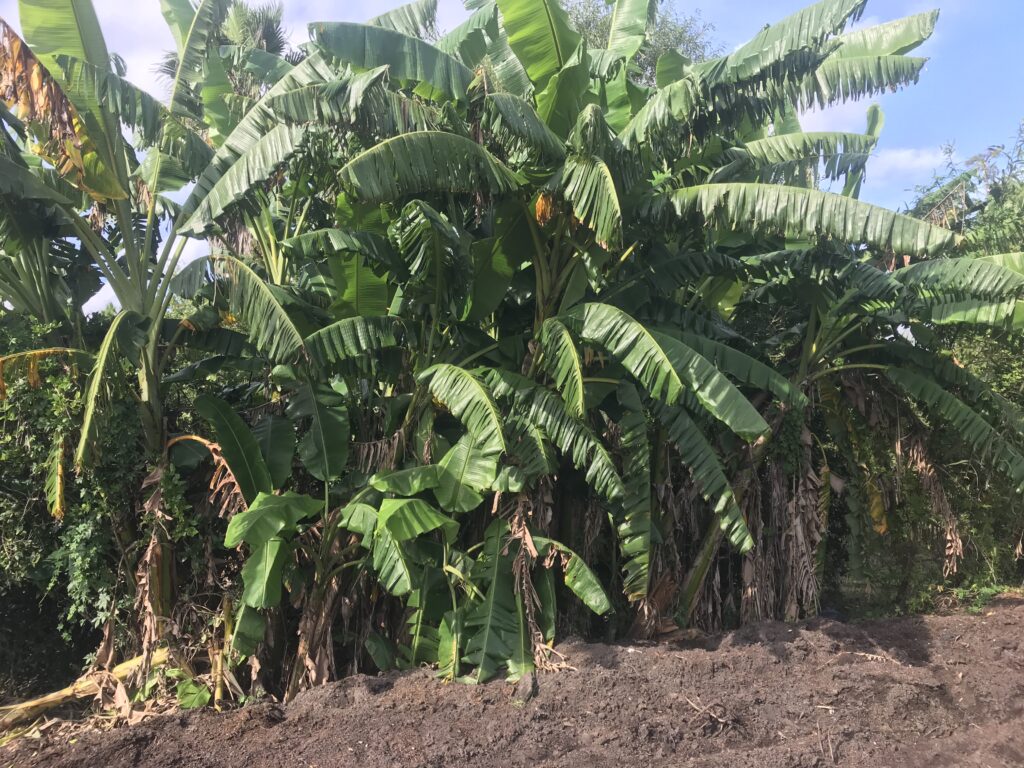
Size of the Orinoco Banana/ Old Florida Plantain Plant When Mature:
The mature size on a Blue Java / Ice Cream banana plant reaches to16 ft in height ( banana plants are measured at the top of the pseudostem not the top of the foliage ) and can quickly reach to 15-20 ft width when left to form large mats without removing pups. Orinoco banana plants produce pups readily, you can opt to dig them up and plant them back again elsewhere in the garden or just leave them be. I tend to with my Orinoco bananas leave them be and let them form huge clumps. Then I typically get 4 or more stems fruiting that year on from that banana mat.
Pruning Orinoco Banana/ Old Florida Plantain for the Northeast Florida Landscape:
Banana plants form clumps by sending up suckers off the rhizome that forms underground. The stem will die after flowering|forming fruits and the side shoots will replace it repeating the process when it reaches maturity.
Prune out the center stem that has died and leave one to three well spaced stems that are directly connected to the main stem to grow up and replace it. Leaving too many suckers to grow will result in poor fruit production on many varieties of banana. NOTE: it does not seem to apply to Orinoco Banana plants.
When growing for MAXIMUM PRODUCTION PER SQUARE FT: Be careful not to leave water shoots a sucker close to, but only superficially attached to the main stem) that will emerge at a distance from the main stem, these shoots are not as productive and should be removed if you are maximizing production for your garden space, only keep shoots that are directly connected to the flowering base. Visually sword suckers will be taller and thinner with elongated leaves, water shoots will be smaller and have fatter stems and fatter leaves when young and tend to be farther away from the original trunk. BOTH water suckers and sword suckers are productive banana stems, both if left in place or dug and transplanted into another area will grow and produce both fruit and multiply, water suckers are just a bit slower growing at first but will still grow and produce both water suckers and sword suckers themselves.
Blooms and Fruit of Orinoco Banana/ Old Florida Plantain Plant for Northeast Florida Landscape:
Orinoco Banana/ Old Florida Plantain has 3-5 hands per pseudostem of smaller thick angular fruits that when ripened fully have a pleasant sweet tart taste that make an excellent out of hand eating banana, can be cooked as dessert plantains and a slightly denser texture that holds up well to frying for chips etc.
The image to the right is a particularly fat Orinoco fruit my favorite plant produced one year…and yes it was delicious! If you look at the images at the bottom of the page you will see Orinoco fruits that were allowed to ripen on the stem, they are bright golden yellow and have allot of brown on the outside of the peel. Unlike grocery store bananas the texture and flavor profile is perfect when the Orinoco bananas begin to show a lot of brown spotting and brown on the outside of the peel when they are ready to eat. I always tell people that if it doesn’t look like it needs thrown away…its not ready to eat with Orinoco Banana fruit.
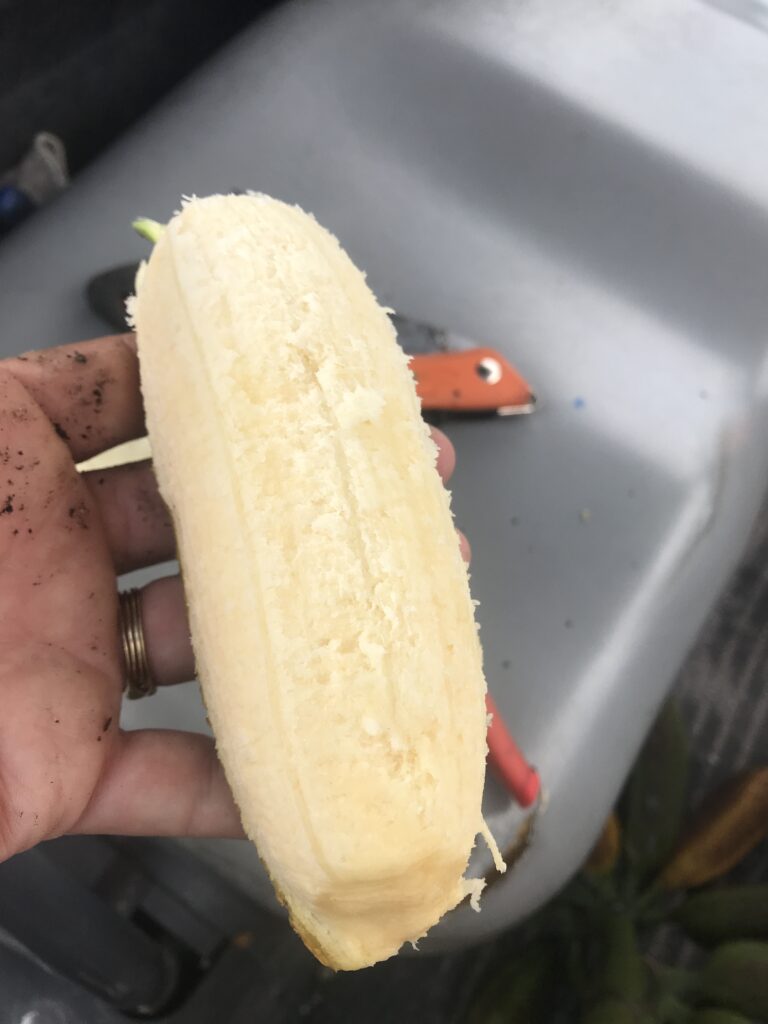
Water and Fertilizer Requirements of the Orinoco Banana/ Old Florida Plantain:
Banana plants grow quickly and require plenty of water and fertilizer to sustain that tremendous growth.
Water daily after planting your newly planted banana from and S & J Nursery container for the first two to three weeks being sure to supply your new plant all the water it can possibly need to get growing. Taper your water back to every other day then every third day then to once a week making sure to supply at least an inch to an inch and a half of water each week during the growing season.
The fertilizer recommendation varies depending on what professional you talk to, I guess we all have our opinions and what works best for us, we continue to use and recommend to others. Some recommend a fertilizer N-P-K ratio of 3-1-6 ( your fertilizer bag would say 6-2-12 or a similar ratio to 3-1-6) Others say to use a well balanced plant food keeping the N-P-K ratio at around 8-10-8. And then other garden authors say to use a 6-6-6 fertilizer.
One theme is constant among them all…fertilize frequently and heavily! Some recommend monthly some every other month, but all will tell you that bananas are heavy feeders and a mature banana plant may require as much as 1-2 lbs per application! Start with 1/4 of a lb on small plants and increase the amount applied monthly as the plant grows.
You may be able to locate a fertilizer formulated specifically for tropical plants or banana plants, I use composted manure and the leftover fruits and vegetable peels etc from kitchen scraps on mine and get good results.
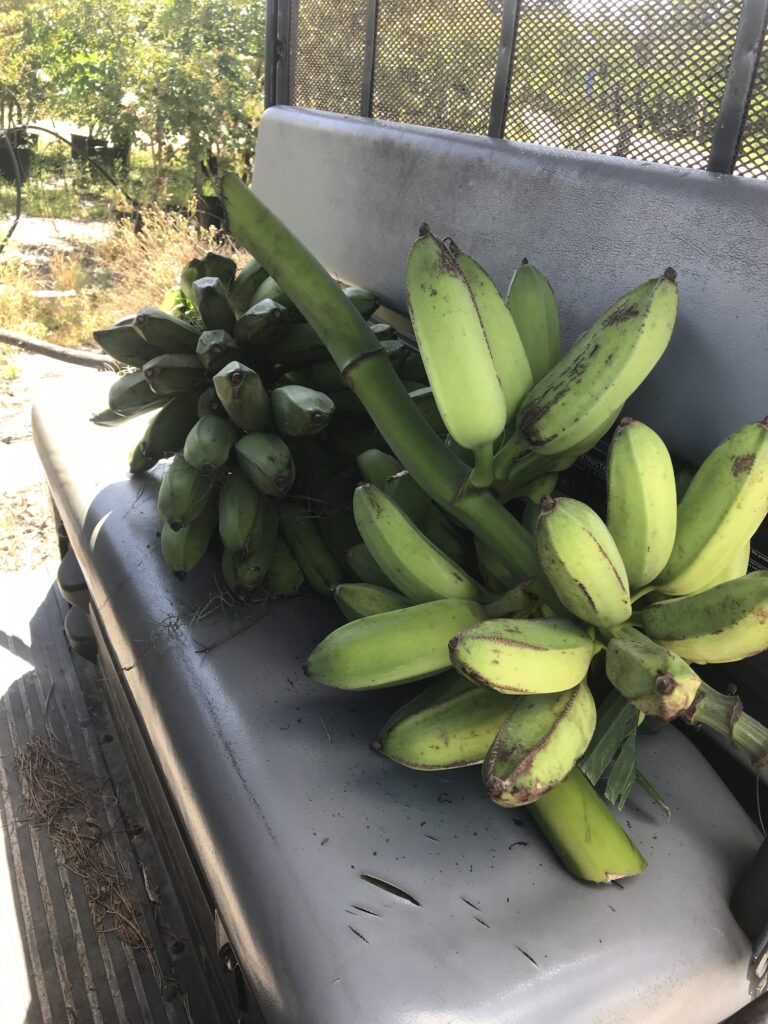
Harvesting your Banana Plants Fruits:
Banana fruits mature slowly on the tree, some taking months after forming before the first hand begins to show any yellowing. When your unfamiliar with your particular banana plant varieties mature size and thickness a good rule of thumb when harvesting is to be sure to leave the fruit on the tree until you see the first hand of bananas start to show some color before removing them from the tree to allow them to finish ripening indoors. This again is personal preference with some people opting to harvest their banana trees one hand at a time allowing each one to fully ripen and removing each hand individually down the stalk while leaving the others on the tree to ripen slowly, this method extends the harvest a bit so in a plant that is a heavy producer this method may have merit.
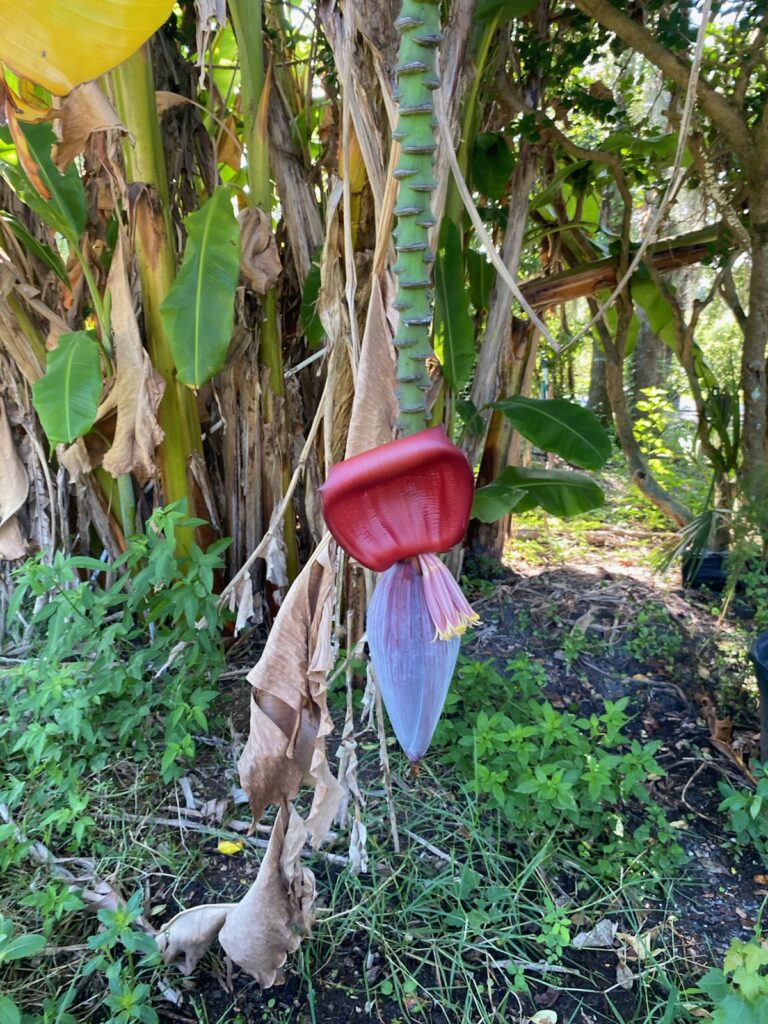
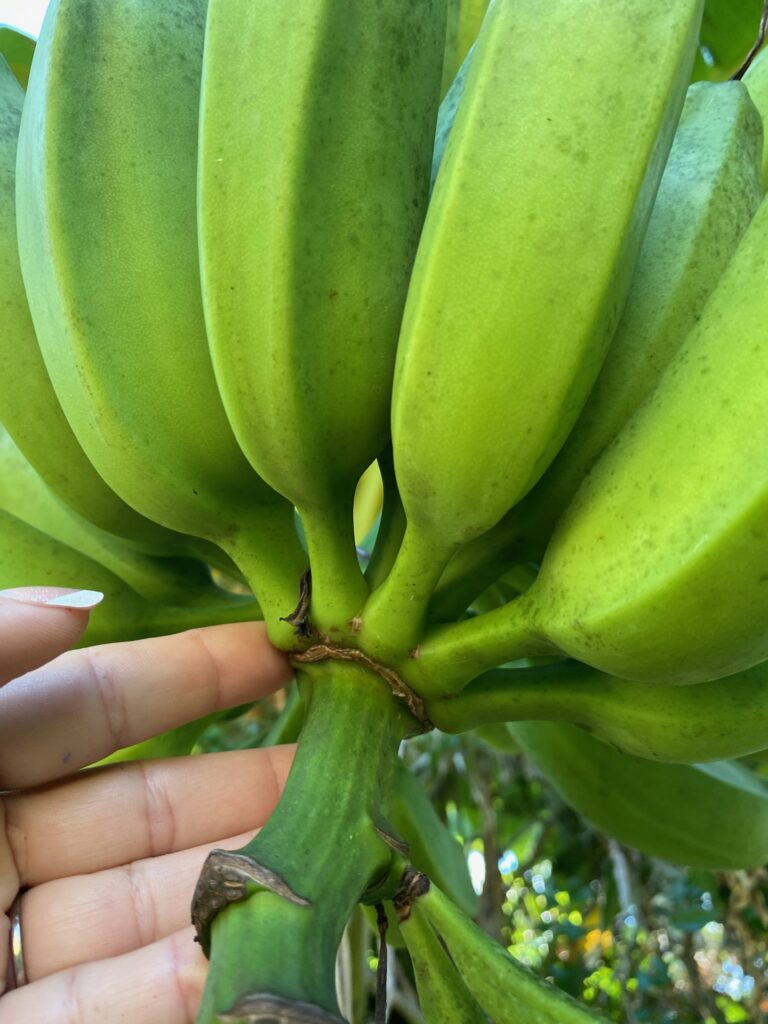
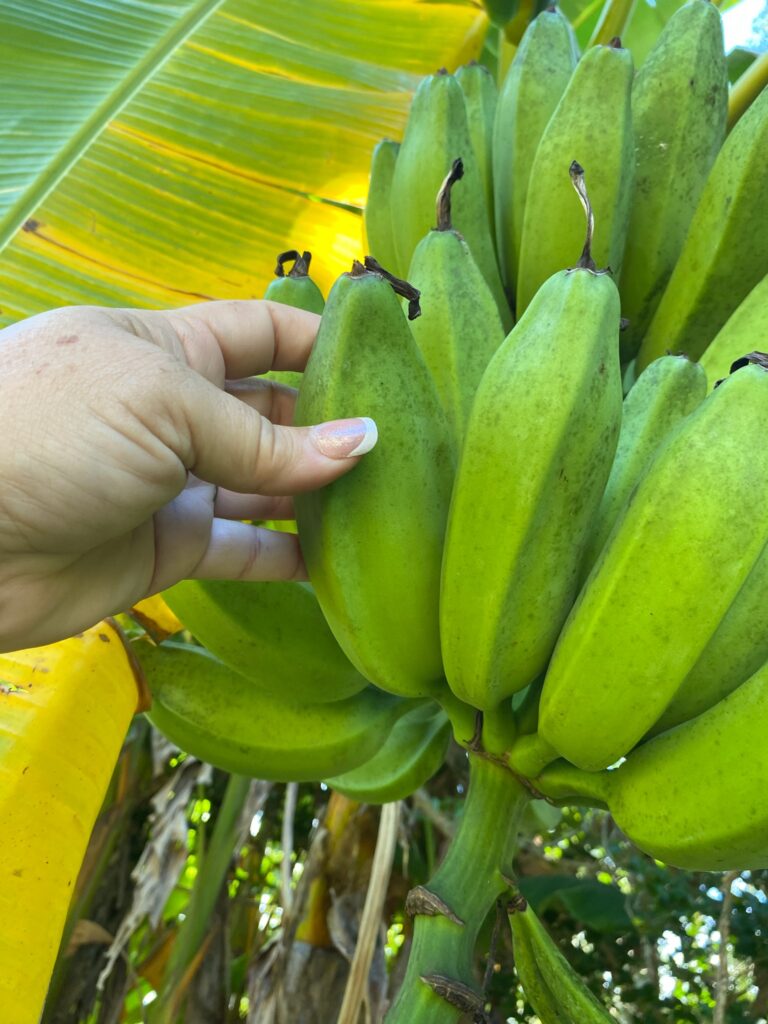
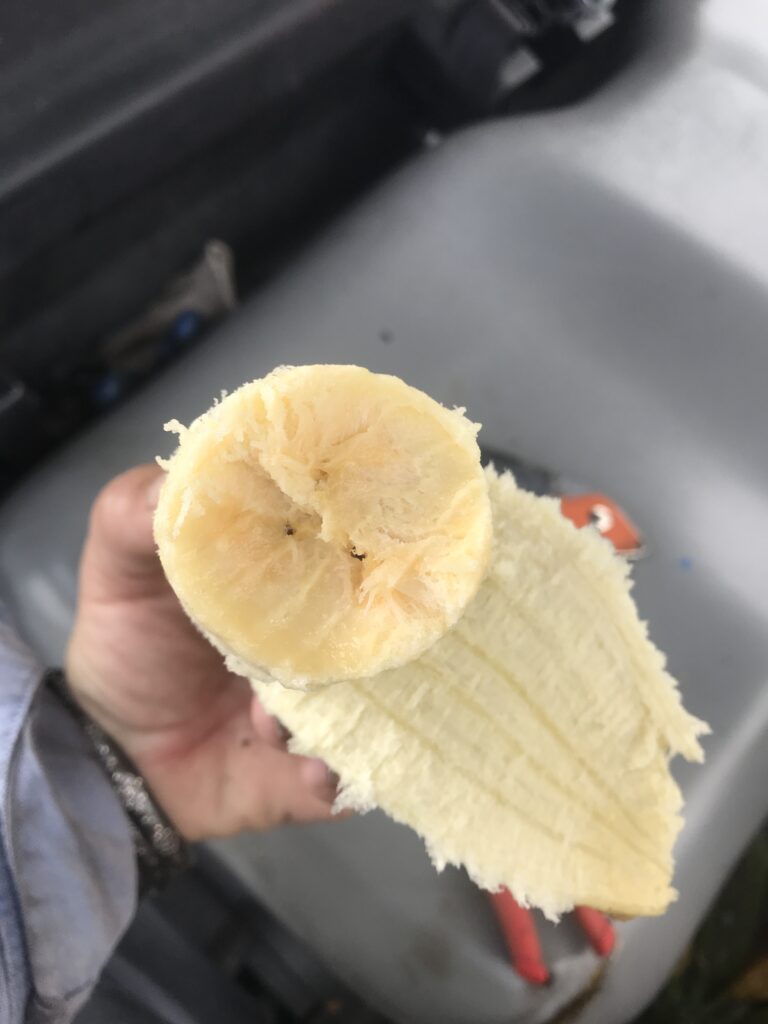
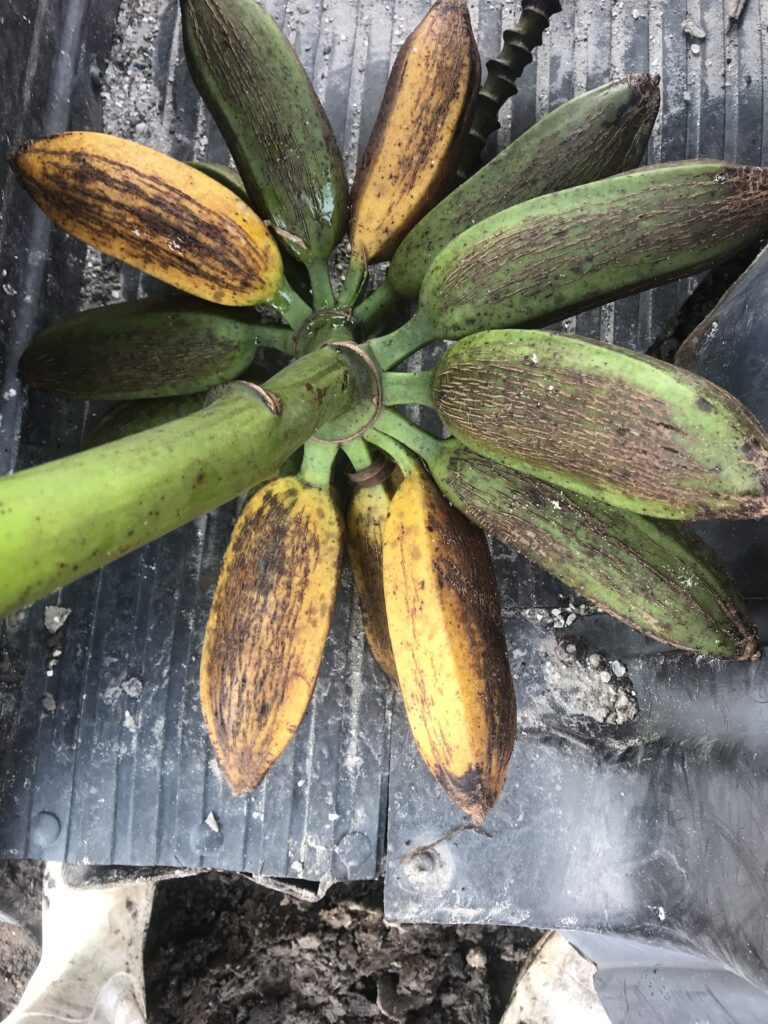

Copyright © All rights reserved | Theme by MantraBrain

